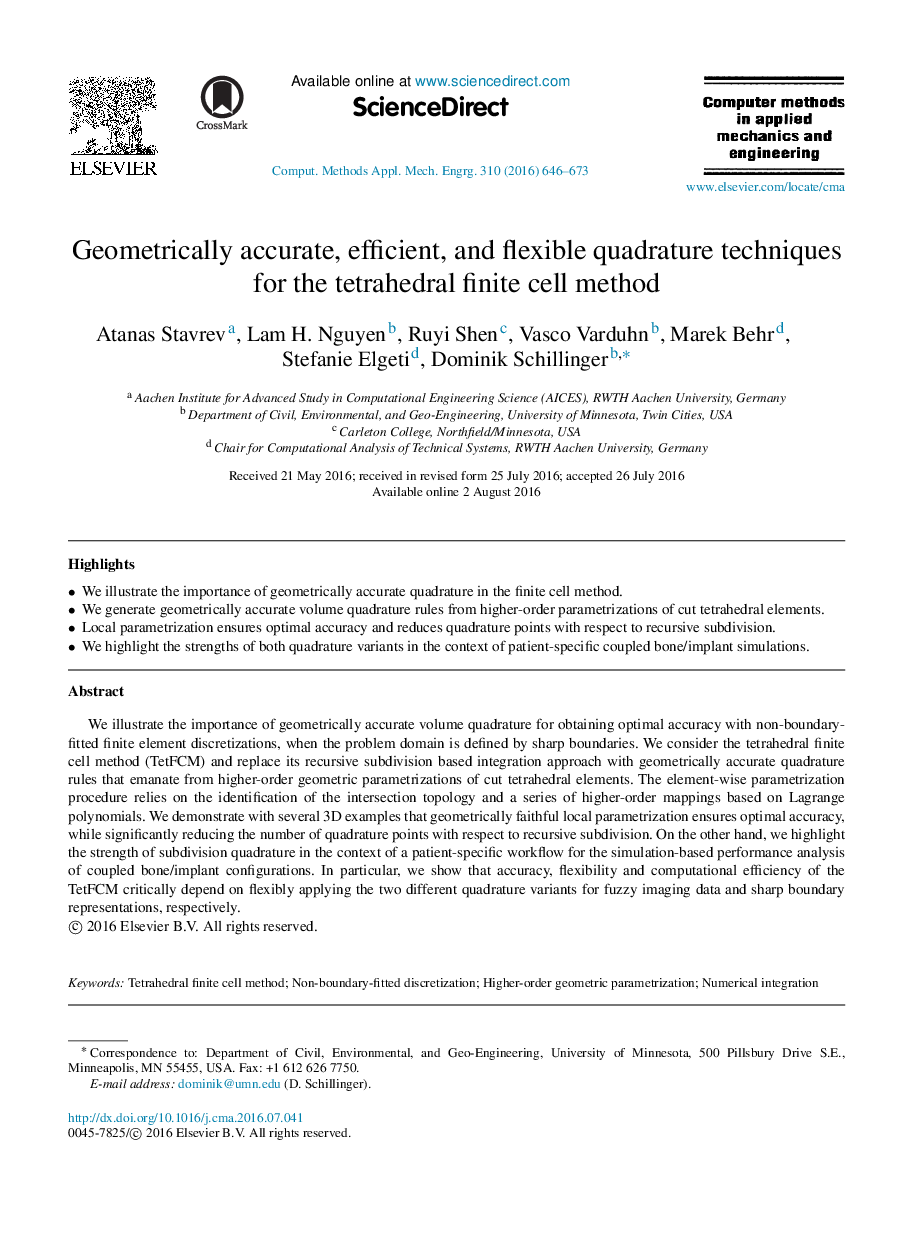| Article ID | Journal | Published Year | Pages | File Type |
|---|---|---|---|---|
| 6915884 | Computer Methods in Applied Mechanics and Engineering | 2016 | 28 Pages |
Abstract
We illustrate the importance of geometrically accurate volume quadrature for obtaining optimal accuracy with non-boundary-fitted finite element discretizations, when the problem domain is defined by sharp boundaries. We consider the tetrahedral finite cell method (TetFCM) and replace its recursive subdivision based integration approach with geometrically accurate quadrature rules that emanate from higher-order geometric parametrizations of cut tetrahedral elements. The element-wise parametrization procedure relies on the identification of the intersection topology and a series of higher-order mappings based on Lagrange polynomials. We demonstrate with several 3D examples that geometrically faithful local parametrization ensures optimal accuracy, while significantly reducing the number of quadrature points with respect to recursive subdivision. On the other hand, we highlight the strength of subdivision quadrature in the context of a patient-specific workflow for the simulation-based performance analysis of coupled bone/implant configurations. In particular, we show that accuracy, flexibility and computational efficiency of the TetFCM critically depend on flexibly applying the two different quadrature variants for fuzzy imaging data and sharp boundary representations, respectively.
Keywords
Related Topics
Physical Sciences and Engineering
Computer Science
Computer Science Applications
Authors
Atanas Stavrev, Lam H. Nguyen, Ruyi Shen, Vasco Varduhn, Marek Behr, Stefanie Elgeti, Dominik Schillinger,
